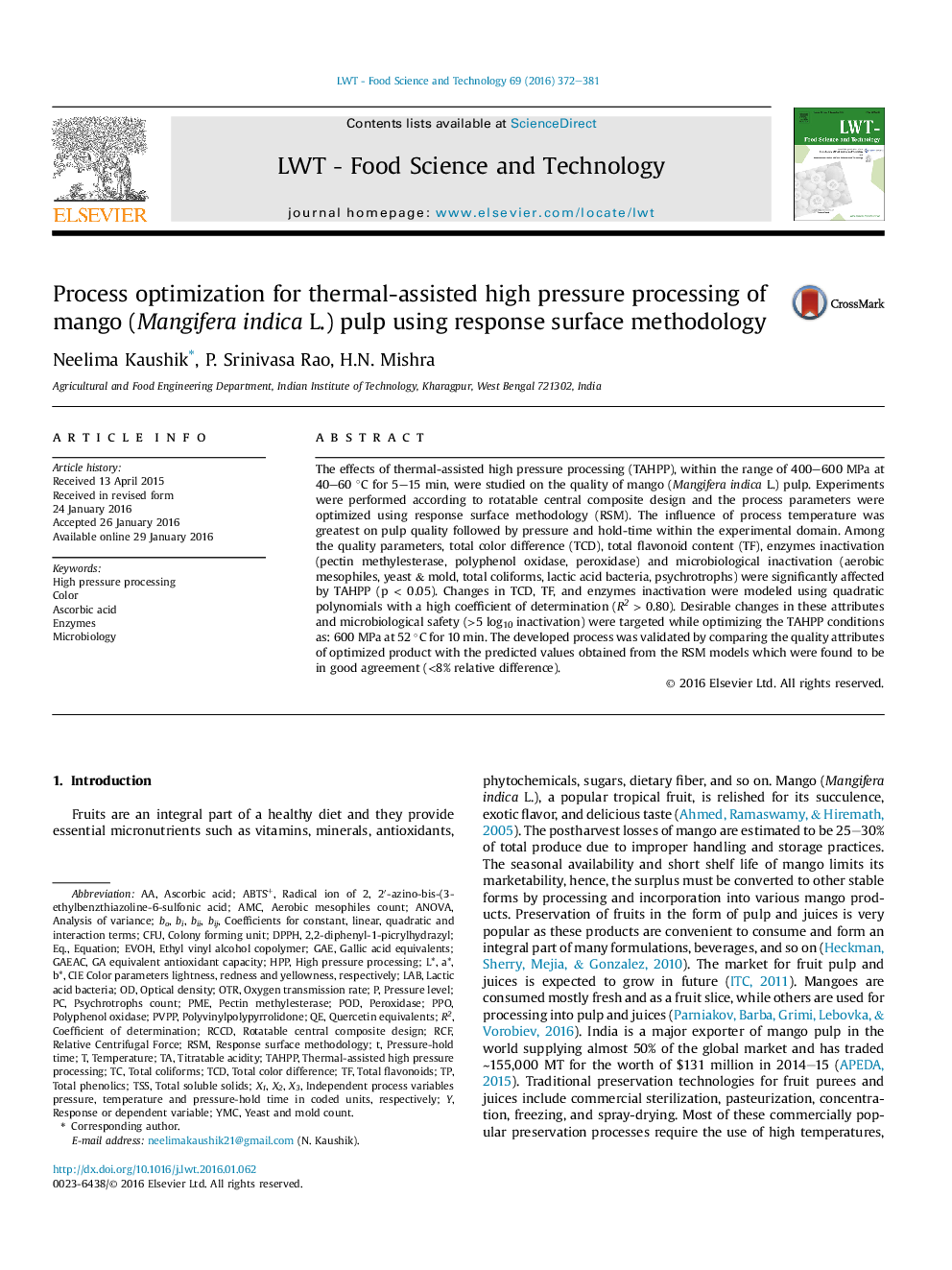| Article ID | Journal | Published Year | Pages | File Type |
|---|---|---|---|---|
| 4563759 | LWT - Food Science and Technology | 2016 | 10 Pages |
•Effect of combined pressure–temperature processing on mango pulp modeled using RSM.•Significant effect found on color, flavonoids, enzymes and microbial inactivation.•Optimized conditions for high quality product were: 600 MPa at 52 °C for 10 min.•A pressure–temperature region identified for obtaining high quality mango pulp.
The effects of thermal-assisted high pressure processing (TAHPP), within the range of 400–600 MPa at 40–60 °C for 5–15 min, were studied on the quality of mango (Mangifera indica L.) pulp. Experiments were performed according to rotatable central composite design and the process parameters were optimized using response surface methodology (RSM). The influence of process temperature was greatest on pulp quality followed by pressure and hold-time within the experimental domain. Among the quality parameters, total color difference (TCD), total flavonoid content (TF), enzymes inactivation (pectin methylesterase, polyphenol oxidase, peroxidase) and microbiological inactivation (aerobic mesophiles, yeast & mold, total coliforms, lactic acid bacteria, psychrotrophs) were significantly affected by TAHPP (p < 0.05). Changes in TCD, TF, and enzymes inactivation were modeled using quadratic polynomials with a high coefficient of determination (R2 > 0.80). Desirable changes in these attributes and microbiological safety (>5 log10 inactivation) were targeted while optimizing the TAHPP conditions as: 600 MPa at 52 °C for 10 min. The developed process was validated by comparing the quality attributes of optimized product with the predicted values obtained from the RSM models which were found to be in good agreement (<8% relative difference).
